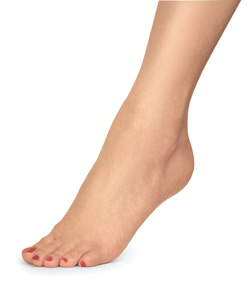Ankle Rash
A Quick Guide to the Causes of Ankle Rash
An ankle rash can be one of the most aggravating medical problems. That’s because most rashes itch incessantly, especially in the beginning. Of course, scratching it only makes it worse but at least you have gained peace temporarily from the nasty itching. An ankle rash can come from something as simple as rubbing your ankle against a shiny leaf while out walking in the woods.
There can be many different causes of ankle rash but the one that is most common is contact dermatitis. This itchy skin condition is caused by a number of different substances including the outside plants, poison ivy and poison oak. Contact dermatitis can also be a reaction to skin contact with soaps or detergents, chemicals, rubber, latex and cosmetics.
An ankle rash usually begins with a patch of redness on the skin that starts to get larger and itch and itch and itch. Sometimes just touching it will cause burning and pain, but other times it goes through stages from red to itching to burning to pain. Scratching usually just makes the rash raw, which means it will hurt more and take longer to heal. Sometimes an ankle rash requires a lot of willpower not to scratch.
Heat rash can occur any time when temperatures are hot. It likes places that are especially moist from sweat such as under the backs of knees or under women’s breasts. You could get heat rash on your ankles, especially if it was very hot and you were wearing socks. Heat rash appears as a blotch of little red bumps on the skin and is more often than not painful to the touch instead of itchy.
Ankle rash can also be a sign of psoriasis, a chronic disease that affects the immune system. With psoriasis, you will see red patches that are scaly, known as psoriatic plaques. These will start to look silver-colored as more and more skin cells build up on the rash spots. The rashes can be anywhere on the body, including arms, legs, scalp, and genital areas. Elbows and knees are perfect spots. Psoriasis is chronic and patches can reoccur in the same places frequently. It is usually accompanied by joint pain and people who suffer from psoriasis often acquire psoriatic arthritis. No one knows what causes psoriasis but the theories point to it being a genetic disease. It is definitely aggravated by stress.
Dermatitis can cause all sorts of skin problems, including ankle rash. There are several different types of dermatitis, among them atopic dermatitis, which is more commonly called eczema. Dermatitis can occur just about anywhere. While not contagious or crippling, dermatitis does cause itchy, swollen and painful skin.
Eczema is an extremely itchy skin condition that can cause ankle rash. It often occurs a little higher up under the knees. Eczema is also a chronic condition which can affect the body’s immune system. You can go for many years without an outbreak but eczema usually returns again in a few years. It is often complicated by hay fever or allergies which accompany it.
Just about every single type of ankle rash is treated with topical corticosteroids. These are applied to the skin as a lotion, cream, or ointment. The treatment will reduce the swelling and itching and allow the skin to heal.
While the most of the time an ankle rash is not a significant condition in terms of illness and death, there are situations when it can be. A rash that is slow to heal can be a sign of a chronic disease. For instance, an ankle rash or a rash on the legs that reoccurs frequently or does not heal is a classic symptom of diabetes, especially diabetes 2.
If you have an ankle rash that is not healing, seek treatment from a medial professional as soon as you can. If you have undiagnosed diabetes and do not receive treatment, it can result in death. Rashes are also very bothersome for diabetics, because if they do not heal they can easily get infected. If the infection gets bad enough or treatments fail, it is possible to need to have the leg amputated. While this is a worst case scenario, it still makes it all the more imperative that you don’t ignore a skin condition because you think it’s not significant. Antibiotics may be needed and you should get them as early as possible.
